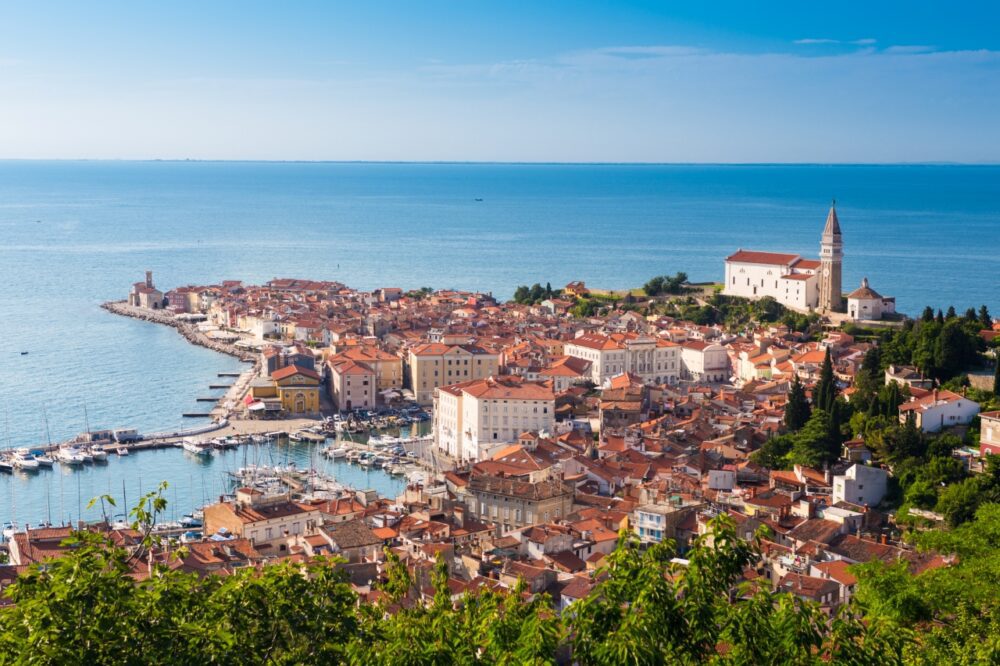
Is Piran worth visiting? Absolutely! The first time I set foot in Piran, I was enchanted by its Venetian charm, sparkling Adriatic waters, and relaxed coastal vibe. Wandering through its narrow cobblestone streets, past colourful buildings and up to the hilltop St. George’s Parish Church, I realised Piran is one of those places that feels like a hidden Mediterranean treasure. It’s small, but it’s packed with beauty and history, making it a joy to explore.
Piran is a tiny coastal town located on Slovenia’s short stretch of the Adriatic coast, but don’t let its size fool you—it’s brimming with charm. Often compared to Italy’s coastal villages (unsurprisingly, as it was once part of the Venetian Republic), Piran is famous for its stunning architecture, vibrant Tartini Square, and breathtaking sea views. Whether you’re enjoying fresh seafood by the marina, swimming in the crystal-clear waters, or simply soaking up the laid-back atmosphere, Piran offers the perfect escape.
But is Piran worth visiting for you? In this blog post, we’ll uncover the top 10 reasons why Piran should be on your travel list, from its Venetian heritage to its scenic coastline. Plus, we’ll share travel tips to help you plan your trip to this gem on Slovenia’s Istrian coast. Keep reading to discover why Piran is a must-visit destination in Slovenia.
Table of Contents
Pros – Reasons You Should Visit Piran
1. A Stunning Venetian-Style Coastal Town
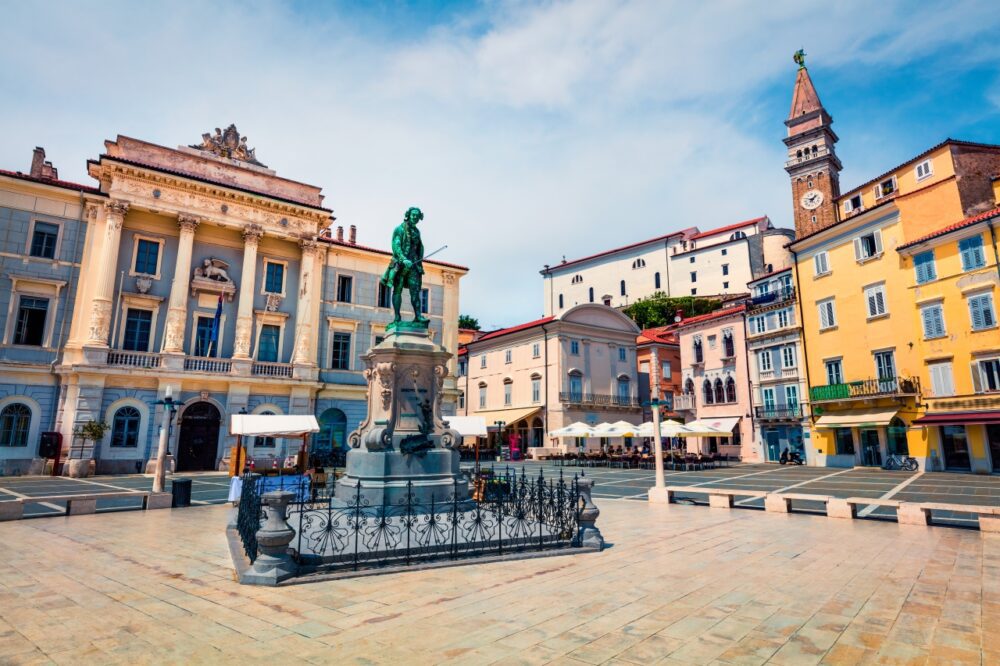
Piran is one of the most picturesque towns on the Adriatic coast, often compared to a miniature version of Venice. With its narrow cobblestone streets, charming pastel-colored buildings, and scenic seaside promenades, the town exudes a romantic and timeless beauty. Its Venetian influence is evident everywhere, from the elegant bell tower to the red-roofed houses lining the harbor.
The moment I arrived in Piran, I felt like I had stepped into an old-world Mediterranean postcard. Walking through the labyrinth of narrow alleyways, I stumbled upon hidden courtyards, charming cafés, and historic churches. Unlike some coastal towns that feel overly modernized, Piran has retained its authenticity, making it one of the most enchanting places to visit in Slovenia.
2. Spectacular Views from the Town Walls and Bell Tower
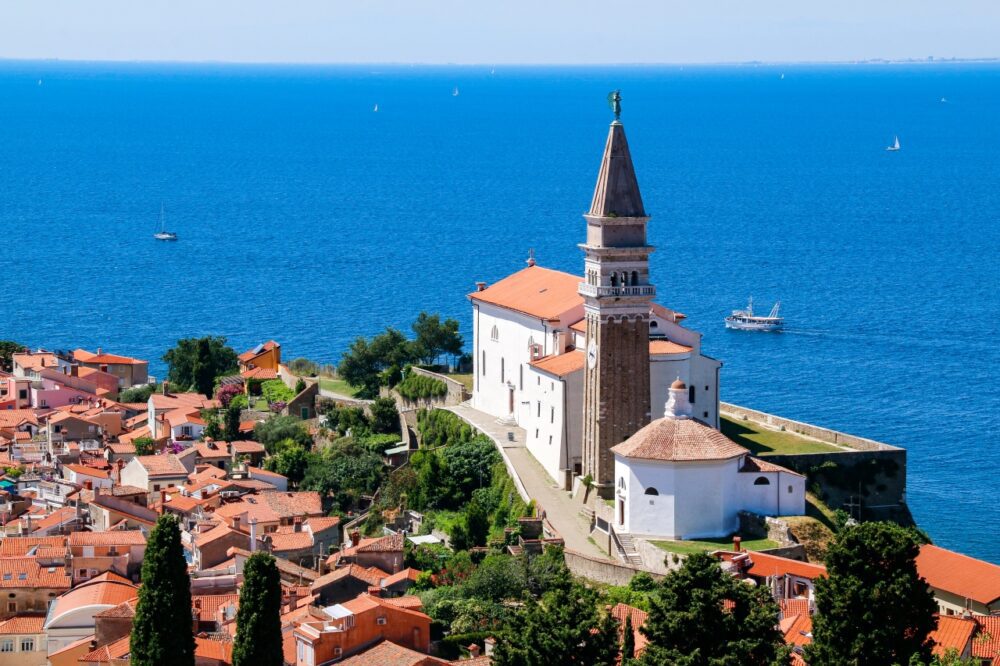
One of the best things about Piran is the breathtaking panoramic views of the town and the Adriatic Sea. The town’s medieval walls, perched on a hill above the old town, offer a stunning vantage point where you can see the red-tiled rooftops, the shimmering coastline, and even the distant outline of Italy and Croatia on a clear day.
I climbed up to the top of St. George’s Bell Tower, and the view was absolutely worth the effort. From up there, I could see the entire peninsula stretching out into the sea, with boats gently bobbing in the marina and the sun setting over the horizon. Whether you visit during sunrise or sunset, these viewpoints provide some of the most unforgettable sights in Slovenia.
3. A Perfectly Walkable and Car-Free Old Town
Piran’s old town is completely pedestrian-friendly, making it a joy to explore on foot without the noise and congestion of cars. The town’s compact size means that all the main attractions, from Tartini Square to the waterfront, are within easy walking distance.
I loved the freedom of strolling through the town at my own pace, without having to worry about traffic. The winding streets, lined with centuries-old stone buildings and flower-filled balconies, made every walk feel like an adventure. Unlike bigger cities, where getting around can be stressful, Piran offers a relaxed and intimate atmosphere where you can truly slow down and enjoy the moment.
4. A Stunning Waterfront with a Relaxed Mediterranean Vibe
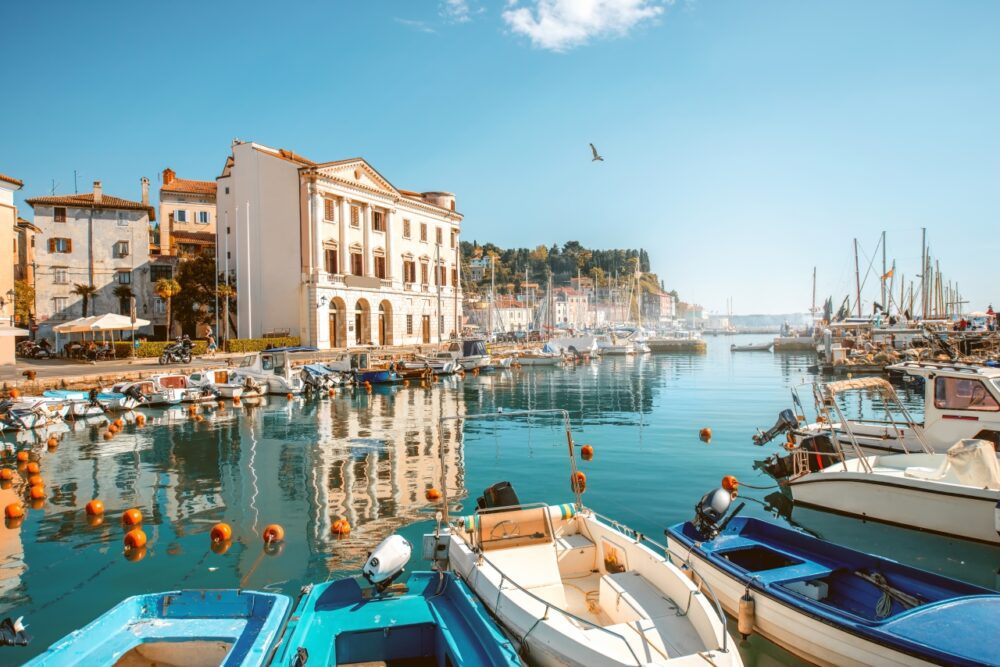
Piran’s waterfront is one of the most beautiful in the Adriatic, lined with outdoor cafés, seafood restaurants, and scenic walking paths. Without sandy beaches, the town instead offers stone piers and rocky coves where locals and visitors alike sunbathe and swim in the crystal-clear waters.
I spent a lazy afternoon sitting at a seaside café, sipping on a glass of local Malvasia wine while watching sailboats glide across the water. Later, I joined the locals in taking a dip right off the concrete promenade—an experience that felt uniquely European. The lack of overcrowded, commercialized beaches made the whole atmosphere feel more relaxed and authentic.
5. Delicious Fresh Seafood and Local Slovenian Cuisine
Being a coastal town, Piran is famous for its fresh seafood, and the restaurants here serve up some of the best fish and shellfish in Slovenia. The local cuisine is a mix of Mediterranean and Central European influences, with plenty of olive oil, fresh herbs, and seasonal vegetables.
I had an unforgettable meal at a waterfront restaurant, where I tried grilled sea bass, freshly caught that morning, drizzled with local olive oil and paired with a glass of Slovenian white wine. Another standout dish was the traditional Istrian black risotto, made with cuttlefish ink, which was rich, flavorful, and perfectly cooked. If you’re a seafood lover, Piran is a paradise for fresh and delicious coastal cuisine.
6. A Rich History and Cultural Heritage
Piran has a fascinating history, having been part of the Venetian Republic for centuries before becoming part of Slovenia. The influence of its past is still visible in its architecture, traditions, and even its dialect, which blends Slovenian and Italian elements.
I visited the Maritime Museum, which gave me a deeper understanding of the town’s seafaring past, and explored the medieval town walls, which once protected Piran from invaders. Everywhere I went, history felt alive—whether in the elegant Venetian-style windows or the centuries-old salt warehouses that once played a vital role in Piran’s economy. For history lovers, Piran is full of fascinating stories waiting to be discovered.
7. A Peaceful Alternative to More Touristy Coastal Destinations
Unlike the bustling resorts of Croatia or Italy, Piran offers a more laid-back and intimate experience. While it does get visitors, especially in the summer, it still feels more relaxed and less commercialized than many other seaside destinations.
Even at peak season, I found quiet corners of the town where I could enjoy the views in peace, whether it was a secluded stone pier or a hidden alleyway with a tiny café. Piran strikes a perfect balance—it’s lively enough to have a great atmosphere but never feels overwhelming or overcrowded. If you’re looking for a coastal destination that still retains its charm, Piran is a great choice.
8. Easy Access to Slovenia’s Famous Salt Pans
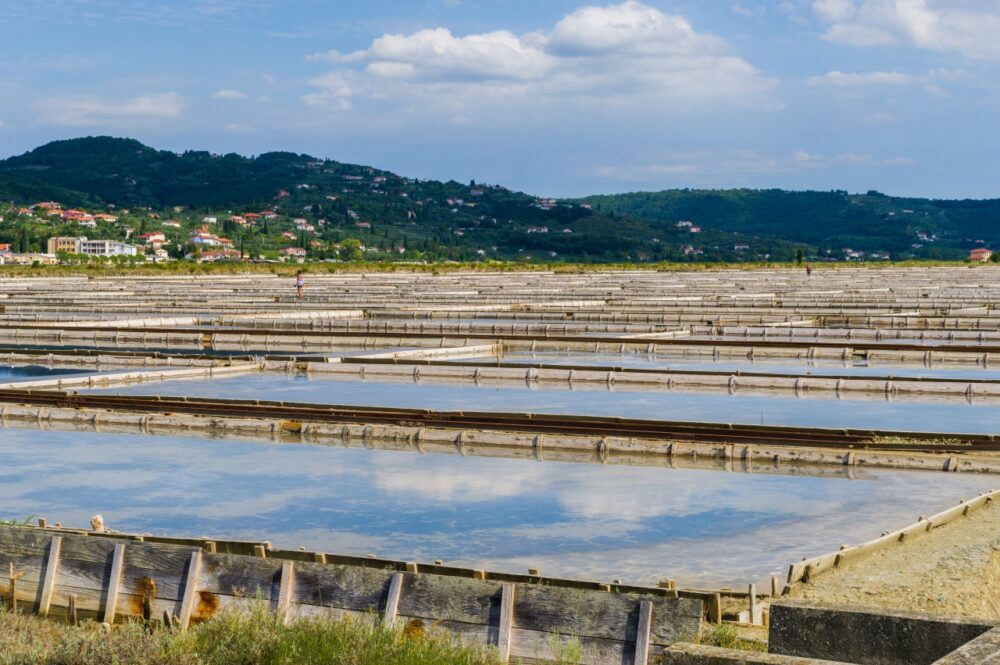
Just outside Piran, the Sečovlje Salt Pans are one of Slovenia’s most unique natural attractions. These centuries-old salt flats have been producing high-quality sea salt using traditional methods since the Venetian era. The area is also home to a nature park with diverse birdlife and scenic walking trails.
I took a short bike ride to the salt pans and was fascinated by the ancient process still being used today. The landscape was surreal—shallow pools reflecting the sky, wooden bridges, and workers harvesting salt by hand. The visitor center provided interesting insights into the history and importance of salt production in the region. It’s a great half-day trip that adds an educational and scenic experience to a stay in Piran.
9. Fantastic Wine and Olive Oil from the Slovenian Coast
Slovenia is an underrated wine destination, and the coastal region around Piran produces excellent wines, particularly white varieties like Malvasia and Rebula. The area is also known for its high-quality olive oil, made from centuries-old groves.
I visited a local wine shop and sampled some incredible wines, all produced just a short drive from Piran. The Malvasia was crisp and aromatic, perfect for pairing with seafood. Later, I tried freshly pressed olive oil, drizzled over homemade bread, and was blown away by the rich, peppery flavor. If you love discovering regional food and drink, Piran’s local specialties are a treat.
10. A Perfect Base for Exploring the Slovenian Coast and Beyond
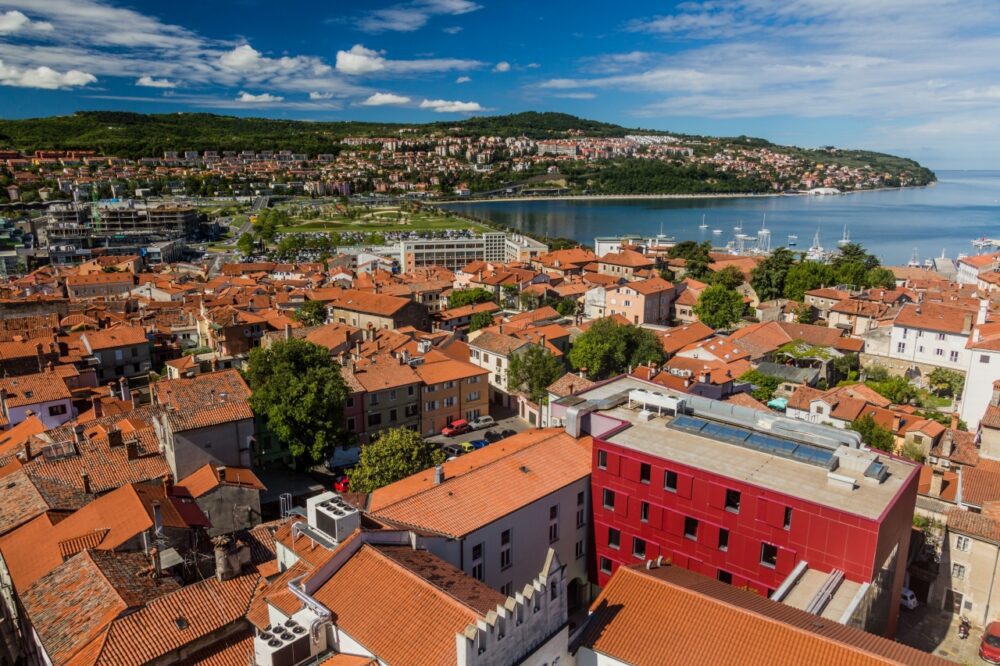
Piran is ideally located for exploring Slovenia’s coastline, as well as nearby regions in Italy and Croatia. The charming towns of Izola and Koper are just a short drive away, offering even more coastal charm and historical sights. Trieste, Italy, is less than an hour away, making it an easy day trip for those who want to experience a different cultural vibe.
I took a short bus ride to Izola, a charming fishing town with a relaxed atmosphere and great seafood. Another day, I hopped over to Trieste and spent the afternoon exploring its grand piazzas and historic cafés. Piran’s location makes it a great base for those who want to see more of the Adriatic region without constantly changing accommodations.
Cons – Things You Should Consider When Visiting Piran
1. Limited Accommodation Options and Higher Prices in Peak Season
Piran is a small town with a limited number of hotels, guesthouses, and apartments, which means that finding accommodation—especially in the summer—can be difficult and expensive. Unlike larger coastal destinations with a wide range of options, Piran’s accommodation choices are more restricted, often filling up quickly during the high season.
I visited in late June and struggled to find a reasonably priced room in the Old Town. Many of the best options had been booked months in advance, and last-minute availability was either overpriced or located outside the historic center. While staying in nearby towns like Portorož is an alternative, it means missing out on Piran’s unique atmosphere after sunset. If you’re planning to visit in summer, booking well in advance is essential to secure a good place at a fair price.
2. No Sandy Beaches and Limited Space for Swimming
While Piran has a beautiful coastline, it lacks traditional sandy beaches. Instead, most swimming areas are rocky, with concrete piers and stone steps leading into the sea. While the water is crystal-clear and inviting, the limited space can make it feel crowded, especially in peak season when locals and tourists alike flock to the waterfront to cool off.
I found a spot along the promenade to go for a swim, but it wasn’t the easiest experience—there were only a few designated entry points, and the sunbathing areas filled up quickly. While the absence of sandy beaches gives Piran a more natural and untouched feel, those who prefer lounging on soft sand might find the swimming spots less comfortable compared to other Adriatic destinations. Bringing water shoes is highly recommended to navigate the rocky shoreline.
3. Parking is Difficult and Cars Are Not Allowed in the Old Town
Piran is a pedestrian-friendly town, which adds to its charm, but it also means that cars are not allowed within the historic center. Visitors arriving by car must park in designated parking areas outside the town and either walk or take a shuttle bus into the Old Town. This can be inconvenient, especially for those carrying heavy luggage or traveling with young children.
I drove to Piran and quickly realized that parking was going to be a challenge. The nearest parking garage was expensive, and the walk into town, while scenic, wasn’t ideal with my bags in the summer heat. While the car-free streets make the town more pleasant to explore, travelers relying on a vehicle should be prepared for extra logistics when arriving and departing.
4. Restaurants Can Be Overpriced and Geared Towards Tourists
Piran’s stunning waterfront setting and popularity as a tourist destination mean that some restaurants, particularly those near Tartini Square and along the promenade, charge higher prices than other parts of Slovenia. While the seafood is fresh and the views are spectacular, some places prioritize location over quality, leading to overpriced meals that don’t always live up to expectations.
I had a meal at a restaurant with a beautiful sea view, only to find that the food was average at best and cost more than similar meals I had elsewhere in Slovenia. While there are excellent dining options in Piran, it’s worth researching ahead of time or venturing slightly off the main streets to find better value for money. Checking online reviews and asking locals for recommendations can help avoid tourist traps.
5. It Can Feel Overcrowded During Peak Season
Despite its small size, Piran attracts a large number of visitors, particularly in July and August. The town’s narrow streets and waterfront areas can become packed with tourists, making it difficult to find a quiet spot to enjoy the scenery. Since Piran is a favorite for both Slovenian locals and international visitors, restaurants, cafés, and swimming areas can feel overcrowded at times.
I visited during a busy summer weekend and found that navigating through the Old Town’s alleyways sometimes felt like moving through a maze of people. Finding a table at a good restaurant without a reservation was nearly impossible, and even getting a prime spot along the waterfront required some patience. While the town’s charm is undeniable, those looking for a peaceful getaway might find Piran too crowded in peak season. Visiting in the shoulder months—May, June, or September—offers a much more relaxed experience.
When to Visit Piran
The best times to visit Piran are spring (April to June) and autumn (September to October). These seasons offer pleasant weather for strolling its Venetian-inspired streets and enjoying the Adriatic coastline without the summer crowds. Summer (July to August) is the peak season, with lively beaches and festivals, but it can be crowded and hotter. Winters in Piran are quiet and mild, making it a great time to explore its historic charm at a relaxed pace.
How to Get to Piran
The nearest airport to Piran is Trieste Airport (TRS) in Italy, just 80 kilometres away, with connections to major European cities. Ljubljana Jože Pučnik Airport (LJU), about 140 kilometres away, is another convenient option. From either airport, shuttle services, buses, or rental cars provide access to Piran. Public buses connect Piran to other Slovenian cities like Ljubljana and Koper, while driving offers flexibility to explore the beautiful Istrian coastline. Keep in mind that Piran’s old town is car-free, so parking is available on the outskirts.
Where to Stay in Piran
Piran offers a variety of accommodations that capture the charm of its coastal setting:
- Luxury: Seafront or Tartini Square – Stay close to iconic landmarks. Options include Hotel Piran, a historic boutique choice with sea views, or Grand Hotel Bernardin, offering upscale amenities and private beach access.
- Mid-range: Old Town or Portorož – Ideal for convenience and character. Consider Memento B&B, blending charm with modern comfort, or Hotel Fiesa, located on a quieter stretch of the coast.
- Budget: Guesthouses or Small Hotels – Affordable options like Alibi B14 Hostel or family-run accommodations in the Old Town provide cosy stays at great value.
Getting Around Piran
Piran is compact and best explored on foot, with its narrow streets, charming squares, and coastal paths easily accessible. For nearby attractions, the free electric mini-bus service within the town is eco-friendly and convenient. Public buses connect Piran to Portorož, Koper, and other towns along the coast. Cycling is a great option, especially for exploring the flat seaside trails, with bike rentals widely available. For trips further afield, taxis and ride-hailing apps are available but not essential given the town’s walkability.
How Long to Spend in Piran
Two days is ideal for enjoying Piran’s highlights, including Tartini Square, St. George’s Parish Church, and a leisurely walk along the Old Town Walls. This allows time to explore the town’s small museums, relax at a local beach, and sample fresh seafood at its harbourside restaurants. With an extra day, consider a trip to nearby Portorož or the Sečovlje Salt Pans, a fascinating nature reserve. Piran’s blend of Venetian charm, coastal beauty, and relaxed atmosphere makes it a perfect escape on the Slovenian Riviera.
Conclusion
So, is Piran worth visiting? Without a doubt! With its picturesque Venetian architecture, serene Adriatic coastline, and laid-back charm, Piran is one of Slovenia’s most enchanting destinations. Highlights like Tartini Square, the hilltop St. George’s Church, and fresh seafood by the sea make it a delight for all kinds of travellers. While it can feel a bit crowded during the summer months, its beauty and charm more than make up for it. If you’re ready to experience Slovenia’s coastal gem, start planning your trip to Piran today—you’ll fall in love with its timeless charm!
